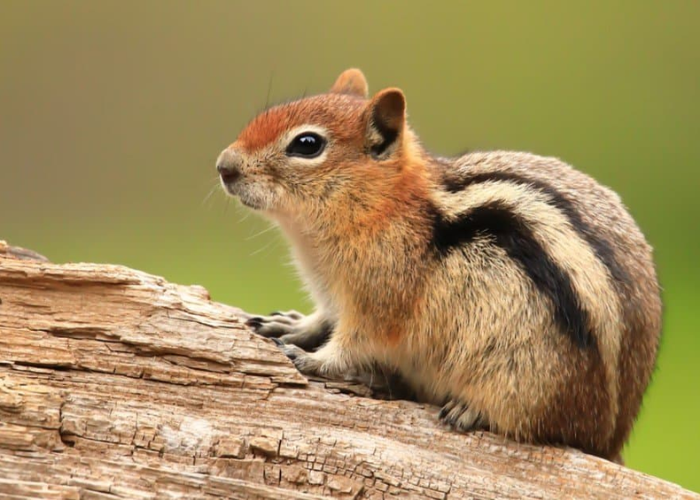
Chipmunks are small, lively rodents that are commonly found in wooded areas, grasslands, and suburban gardens in North America. They are known for their endearing qualities and chirping vocalizations. But one of the most interesting facts about chipmunks is their ability to climb trees.
Habitats of Chipmunks
Chipmunks are small rodents that are found in a variety of habitats throughout the world. They are most commonly associated with wooded areas, and many species are found in forests, woodlands, meadows, and grasslands.
As such, chipmunks are well-adapted to climb trees, and they often do so to escape predators or to access food sources. They are also strong climbers and can climb both up and down vertical surfaces, allowing them to access the highest branches of trees.
Chipmunks can even climb trees that are covered in snow or ice, clinging to the bark with their claws and using their weight to help them ascend. Additionally, chipmunks often use trees as a refuge from predators, as they are well-camouflaged and can hide in the foliage.
Ability to Climb Trees
Chipmunks have the amazing ability to climb trees. They use their sharp claws and agile body to scamper up and down tree trunks with ease. Chipmunks are well adapted to living in trees and use them for protection from predators.
They also eat nuts and seeds found in the tree canopies. They have a knack for finding crevices in the bark of the tree and will often use these same crevices over and over again to ascend and descend the tree. As they climb, they often use their tails for balance.
The tail also serves as a cushion as they jump from branch to branch. With their strong claws and impressive agility, chipmunks can climb up and down trees with ease.
Characteristics of Chipmunk Tree-Climbing
Chipmunks are excellent tree climbers, with traits that make them perfectly suited to scaling the trunks of trees. They have long claws that allow them to grip the bark of trees, and their agile bodies allow them to move quickly and easily.
Their small size also helps them to maneuver through the branches of trees, as their low weight makes it easier for them to move around. Chipmunks are also known to be curious creatures, often exploring new branches and looking for food.
All of these characteristics make them great tree climbers and help them to thrive in their natural environment.
Benefits of Chipmunk Tree-Climbing
Chipmunks are small rodents native to North America and many parts of the world. They have an innate ability to climb trees and use them to their advantage. There are several benefits to chipmunk tree-climbing, both for the chipmunk and for their environment.
First, climbing trees helps chipmunks access food sources that are otherwise inaccessible. They can collect nuts, fruits, and other edible treats from the highest branches of trees that are out of reach for other animals.
Additionally, chipmunks can use trees as a way to escape predators. By climbing to the tops of trees, they can quickly and safely get away from ground-dwelling predators. Lastly, chipmunks are able to use trees for shelter. They can construct nests in the forks of branches, providing a safe and comfortable place to sleep and raise their young.
In conclusion, chipmunks are excellent climbers that can use trees to their advantage. Trees provide chipmunks with access to food, a way to avoid predators and a safe place to sleep and raise their young. For these reasons, chipmunks are highly adept tree climbers and their ability to do so is an essential part of their survival.
Potential Risks of Chipmunk Tree-Climbing
Tree climbing may seem like an innocuous activity for chipmunks, but it can actually pose some significant risks. Chipmunks are incredibly agile creatures, and they can climb up trees with relative ease.
However, the higher they climb, the more exposed they are to potential predators or other hazards. While a chipmunk can usually escape a predator by running up a tree, if it is too high up, it is at risk of being attacked or even falling from a great height.
Additionally, chipmunks are not immune to physical injuries from climbing, such as scrapes, cuts, or even broken bones. The trees themselves can also pose risks to chipmunks, as the bark may be slippery or the branches may be brittle and break off.
Conclusion
Chipmunks do indeed climb trees. With their sharp claws, strong hind legs, and agile bodies, chipmunks make excellent climbers. This allows them to reach the highest branches of trees, where they can find food and shelter. It also helps them escape predators.
Chipmunks are also known for their acrobatic abilities, which allow them to skillfully maneuver around branches and trunks. While chipmunks are not native to all parts of the world, they can be found in many places and can make quite an impression when seen up close. So, the answer to the question “Do chipmunks climb trees?” is a resounding yes!










